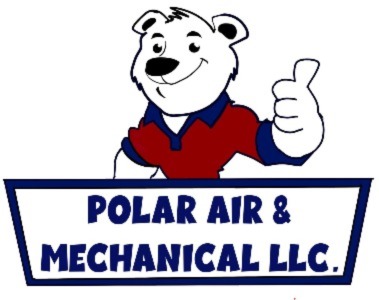
To combat increasing energy expenses and embrace sustainability, many homeowners are looking for ways to enjoy the same standards of comfort while reducing utility bills. As part of the Inflation Reduction Act, federal tax credits are available for high efficiency HVAC equipment. These credits offer big savings, provided that homeowners work with eligible equipment and submit the right paperwork.
If you’re concerned the application process might be tedious, we’re offering to help! Polar Air & Mechanical hopes this guide will give you everything you need to earn these HVAC tax credits in 2024. Here’s what you should know.
How Do These Tax Credits Work?
These valuable tax credits for energy-efficient home improvements are just one intended use of the recent Inflation Reduction Act. Energy costs affect everyone, so helping homeowners upgrade to higher efficiency utilities can benefit everyone. The primary goal of these credits is to reduce the cost of installing high efficiency upgrades. Of particular importance are the Energy Efficiency Home Improvement Credit and the Residential Clean Energy Credit.
Don’t forget, to apply for the credits, you’ll have to complete IRS Form 5695. Additionally, this form needs to be submitted within the same tax year your upgrades were installed, not purchased.
Energy Efficiency Home Improvement Credit
Through 2032, the Energy Efficiency Home Improvement Credit provides up to $3,200 each year for energy-efficient home upgrades. This equals 30% of the total project’s cost. It's important to note in order to get back the maximum amount, it means making severel investments. For example, you’ll receive up to $2,000 for a new, high-efficiency heat pump. This can be paired with an additional $1,200 in credits for more projects in the tax year.
While new heat pump systems are a key target for this incentive, high-efficiency furnaces, air conditioners, boilers, and other HVAC systems are still eligible for this tax credit. You’ll need to confirm that your choice’s energy efficiency rating is sufficient to qualify.
Residential Clean Energy Credit
The Residential Clean Energy Credit amounts to roughly 30% savings on a wide range of residential clean energy efficiency projects. Eligibility only applies to homeowners seeking to update existing or newly constructed homes. While the Home Improvement Credit works primarily with utilities and HVAC systems, this credit is more about renewable energy sources like solar and wind energy.
Some specific items in this tax credit include the requirement that installation must occur between 2022 and 2032. But at the same time, homeowners can use any excess credit to reduce taxes in future years. This is a great way to soften the entry into investing in clean energy.
Additional Qualifications for Energy Tax Credits
Because HVAC systems are one of the biggest portions of your monthly energy costs, these tax credits offer more access to the most energy-efficient options. But home energy efficiency can be improved in lots of other ways. Apart from the previously listed HVAC upgrades, {you could also choose|other eligible items include|you also have access to:
- Energy-saving heat pump water heating systems
- Electrical panel upgrades
- Upgraded electrical wiring
- Enhancements to insulation, air sealing, and ventilation
- Energy-efficient cooking appliances like stoves, cooktops, and ovens
- Heat pump clothes dryers
- High-efficiency water boilers
Like the HVAC systems, you’ll need to check that your chosen products meet the required energy efficiency ratings.
Maximizing Your 2024 HVAC Tax Credits: Top 3 Tips
While all the listed upgrades can improve your home’s energy efficiency, some planning ahead will ensure the best chance at more long-term benefits. Maximize your HVAC tax credits with the following three tips:
- Perform an energy audit to pinpoint valuable enhancements. Trust experienced HVAC companies to pinpoint essential products and services.
- Enhance your home's envelope by addressing inefficient windows and doors.
- Explore potential rebates from utility companies for clean energy upgrades. Renewable sources like solar, wind, and geothermal contribute to community power grid sustainability.
- Remember to consider financing plans offered by service providers.
Secure Your 2024 HVAC Credits with Help from Polar Air & Mechanical
Partner with local HVAC professionals like Polar Air & Mechanical for help with home energy audits and new installation projects. Our experienced installers can deliver whatever you need for home energy efficiency upgrades.


